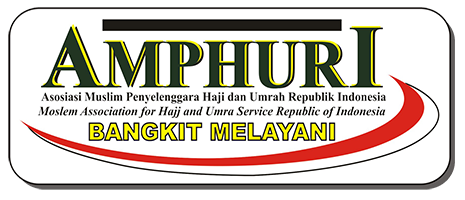HAJJ AND UMRAH AS A MEDIUM FOR MORAL EDUCATION IN ADDRESSING NARCISSISTIC TENDENCIES IN THE MODERN ERA
DOI:
https://doi.org/10.32332/multazam.v5i1.9858Keywords:
Moral Education, Hajj and Umrah, Narcissistic TendenciesAbstract
In the modern era, the phenomenon of narcissistic tendencies has increasingly permeated the performance of Hajj and Umrah, obscuring the purpose of spirituality and replacing it with more secular motives. This raises concerns about the quality of moral education provided by the pilgrimage. The article aims to investigate the emerging phenomenon of narcissistic tendencies among Hajj and Umrah pilgrims, examining the underlying factors that drive such behavior and exploring effective strategies to address these challenges while preserving the spiritual essence of the pilgrimage. This study employed a qualitative research approach, utilizing in-depth interviews and direct participant observation to comprehensively explore the manifestations of narcissistic behaviors among Hajj and Umrah participants. Data analysis techniques using the Milles and Huberman models. The findings show that factors such as social pressure, the drive for social recognition, and the influence of social media play a significant role in encouraging narcissistic tendencies behavior among Hajj and Umrah pilgrims. However, it was also found that a holistic moral education approach by KBIHU Al-Multazam Waymili, including fostering spiritual values, providing moral material, personal counseling, strengthening habituation, being wise in using social media, and cultivating simplicity and self-reflection, can mitigate the negative impact of this phenomenon. In conclusion, the phenomenon of narcissistic tendencies in the Hajj and Umrah is a real challenge to maintain the values of spirituality and morality. However, this phenomenon can be overcome with the right moral education approach at the individual and community levels. Hajj and Umrah can remain strong mediums for moral education.
References
Al-Azzam, N, A Matalaqa, and E Rababa’a. “The Moral Education in Al-Ghazali’s View and Its Relationship with Sufism and Contemporary Applications.” Almanara Journal 1, no. 20 (2014): 445–64.
Almuhrzi, Hamed Mohammed, and Abdulaziz Mohammed Alsawafi. “Muslim Perspectives on Spiritual and Religious Travel beyond Hajj: Toward Understanding Motivations for Umrah Travel in Oman.” Tourism Management Perspectives 24 (2017). https://doi.org/10.1016/j.tmp.2017.07.016.
Creswell, Jhon W. Educational Research: Planning, Conducting, and Evaluating Quantitative and Qualitative Research 4e. 4th ed. Prentice Hall India Learning Private Limited, 2015.
Dausari, Abdurrahman Muhammad. Al-Hajj: Ahkamuh, Asraruh, Manafi’uh. 1st ed. Riyadh: Dar Ishbiliya, 1421.
Ditjen Penyelenggara Haji dan Humrah, Kementerian Agama RI. Data Dan Profil KBIHU (Kelompok Bimbingan Ibadah Haji Dan Umrah). 1st ed. Jakarta: Kementerian Agama Republik Indonesia, 2021.
Farid, Farid. “The Concept of Religious Experience by Rudolf Otto: A Phenomenological Approach.” Jurnal Filsafat 34, no. 2 (2024): 235. https://doi.org/10.22146/jf.92141.
Fuad, Sahlul. “Commodification of Religious Rituals: A Potrait of The Meaning of Hajj and Umrah in Indonesia.” Mimbar Agama Dan Budaya 38, no. 2 (2021): 165–78. https://doi.org/10.15408/mimbar.v38i2.25165.
Goni, Mohammd Dauda. “A Confirmatory Factor Analysis of the Knowledge , Attitude and Practice Questionnaire towards Prevention of Respiratory Tract Infections during Hajj and Umrah.” BMC Public Health 20, no. 1 (2020): 1–16. https://doi.org/10.1186/S12889-020-09756-5.
Hasanah, Uswatun. “Nurturing Self-Control Through Spiritual Journey: Analysis of Islamic Educational Philoshophy in The Hajj.” Multazam : Jurnal Manajemen Haji Dan Umrah 3, no. 2 (2023): 37–44. https://doi.org/https://doi.org/10.32332/multazam.v3i2.8122.
Hassan Al-Awamreh, Mohammed. “Al-Imam Al-Ghazali’s View of Moral Education: Its Purposes and Pillars.” US-China Education Review B 6, no. 5 (2016): 311–17. https://doi.org/10.17265/2161-6248/2016.05.004.
“Interview with the Religious Instructors in KBIUH Al-Multazam Annur Walbarakah Gunung Pelindung Lampung Timur, 10 Juni 2014,” n.d.
Khoiruman. “Aspek Ibadah, Latihan Spiritual Dan Ajaran Moral.” El-Afkar 8, no. 1 (2019): 39–60.
Khusna, Azalia Mutammimatul. “Hakikat Ritual Ibadah Haji Dan Maknanya Berdasarkan Pemikiran Willian R.Roff.” An-Nas: Jurnal Humaniora 2, no. 1 (2010): 132–45. https://media.neliti.com/media/publications/283226-hakekat-ritual-ibadah-haji-dan-maknanya-c91f1e3e.pdf.
M. Twenge, Jean, and W.Keith Campbell. “The Narcissism Epidemic.” Brian Johnson’s Philosophers Notes, 2009. https://www.sakkyndig.com/psykologi/artvit/twenge2009.pdf.
Ma’arif, M.Jauharul. “Nilai-Nilai Kependidikan Dalam Ibadah Haji.” At-Thufah 5, no. 9 (2016): 152–66. https://doi.org/https://doi.org/10.36840/jurnalstudikeislaman.v5i9.198.
Mansyur, Abdurrahman, and Nurul Hudaya. “Manajemen Haji Dan Umrah Dalam Pemetaan Bibliometrik.” Multazam: Jurnal Manajemen Haji Dan Umrah 3, no. 2 (2023): 83–99. https://doi.org/https://doi.org/10.32332/multazam.v3i2.8162.
Mardiah, Anisatul. “Fenomena Flexing : Pamer Di Media Sosial Dalam Persfektif Etika Islam.” In C-TiaRS: International Conference on Tradition and Religious Studies, 310–19. Palembang: UIN Raden Fatah Palembang, 2022.
Muhaemin, Muhaemin B. “Dimensi Pendidikan Dalam Ibadah Haji (Telaah Tentang Aspek Pendidikan: Tauhid, Etika, Moral, Sosial Yang Tersirat Dalam Pelaksanaan Ibadah Haji).” Jurnal Adabiyah 13, no. 2 (2013): 214–22. https://journal.uin-alauddin.ac.id/index.php/adabiyah/article/view/322.
Ridha, Muhmmad, D S M Husein, Ritonga Hadri, and Hasan Badarussyamsi. “Sheikh Abdul Aziz Bin Abdullah Bin Baz ’ s Study of Hajj and Umrah Fatwas.” International Journal of Religion Education and Law 2, no. 1 (2023): 23–31. https://doi.org/10.57235/ijrael.v2i1.164.
Rolando, Dede Mercy, and Rahmah Ningsih. “‘From Mecca With Selfie’ Phenomena: Deconstruction of Hajj and Umrah in Da’Wah Management.” Multazam : Jurnal Manajemen Haji Dan Umrah 3, no. 1 (2023): 67. https://doi.org/10.32332/multazam.v3i1.7099.
Showail, Ahmad. “Solving Hajj and Umrah Challenges Using Information and Communication Technology: A Survey.” IEEE Access, 2022. https://doi.org/10.1109/access.2022.3190853.
Syaikhu. “Istitha’ah Dalam Haji (Stude Tematik Tafsir Ahkam Surah Al-Imran Ayat 97).” El-Maslahah 10, no. 1 (2020): 15–25.
Tahir, Hartini. “Praktik Haji Dan Umrah Sebagai Gaya Hidup: Pertumbuhan Bisnis Perjalanan Suci Di Kota Makassar.” Al-Qalam 22, no. 2 (2016): 127–39. https://doi.org/http://dx.doi.org/10.31969/alq.v22i2.315.
Tamami, Muhammad Husni. “Hati-Hati Riya, Ini Hukum Pamer Haji Dan Umrah Di Medsos.” Liputan6.Com, 2023. https://www.liputan6.com/islami/read/5335195/hati-hati-riya-ini-hukum-pamer-haji-dan-umrah-di-medsos.
Tongeren, D.R Van, D.E Davis, J.N Hook, W Rowatt, and E.L Worthington. “Religious Differences in Reporting and Expressing Humility.” Psychology of Religion and Spirituality 10, no. 2 (2018): 174–84. https://doi.org/https://doi.org/10.1037/rel0000118.
Yasuda, S. “The Selfie in Islamic Pilgrimages as a Communication Tool in Hajj and Umrah.” In Spiritual and Religious Tourism : Motivations and Management, 2019. https://doi.org/10.1079/9781786394163.0051.
Zamir, Syed Rizwan. “The Meaning of Mecca: The Politics of Pilgrimage in Early Islam.” In Review of Middle East Studies, 196. london: Saqi Books, 2013. https://doi.org/https://doi.org/10.1017/S215134810005638X.
Downloads
Published
Issue
Section
License
Copyright (c) 2025 Uswatun Hasanah, Uswatun Khasanah, Zaki Faddad Syarif Zain

This work is licensed under a Creative Commons Attribution-ShareAlike 4.0 International License.












